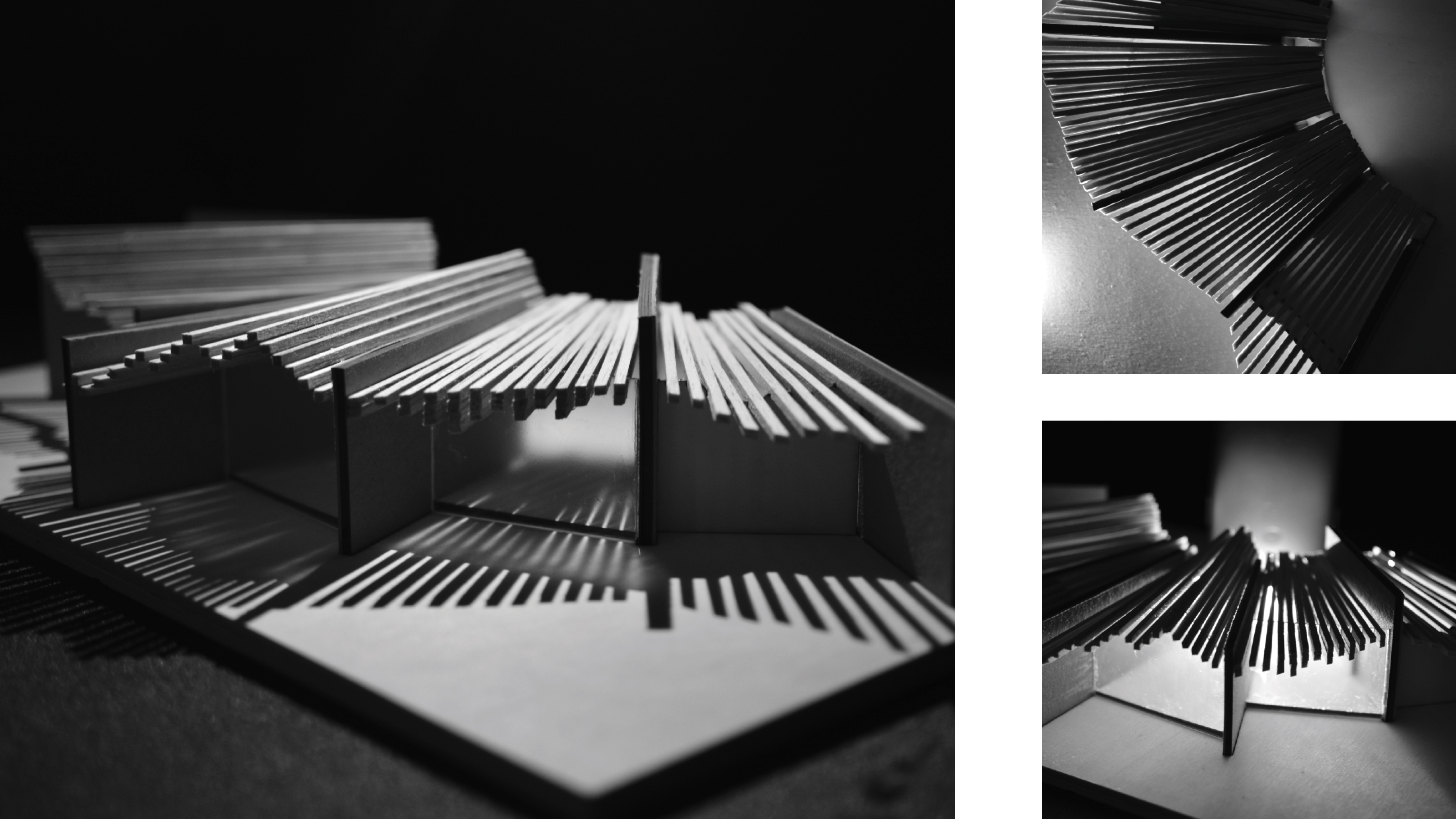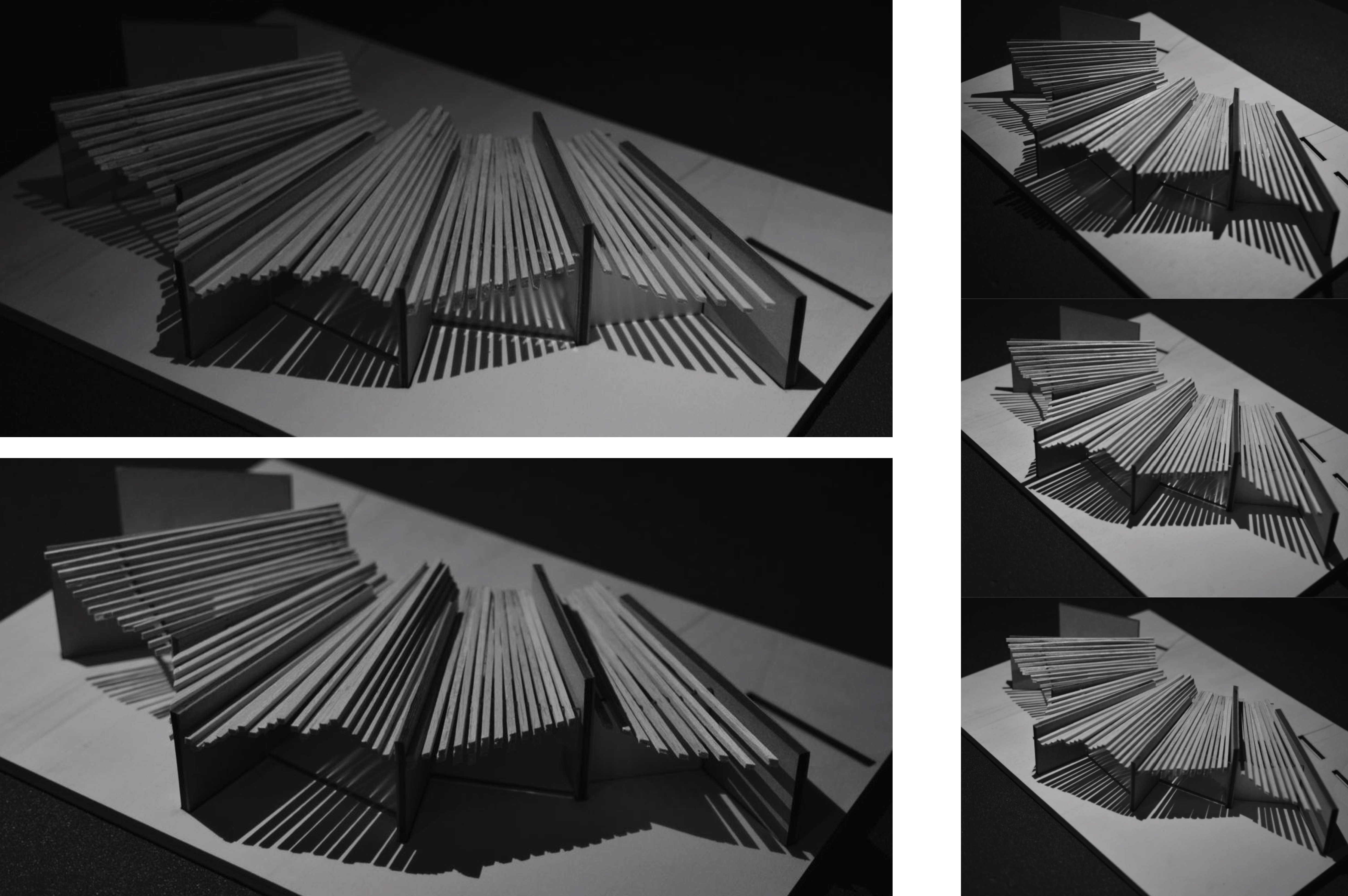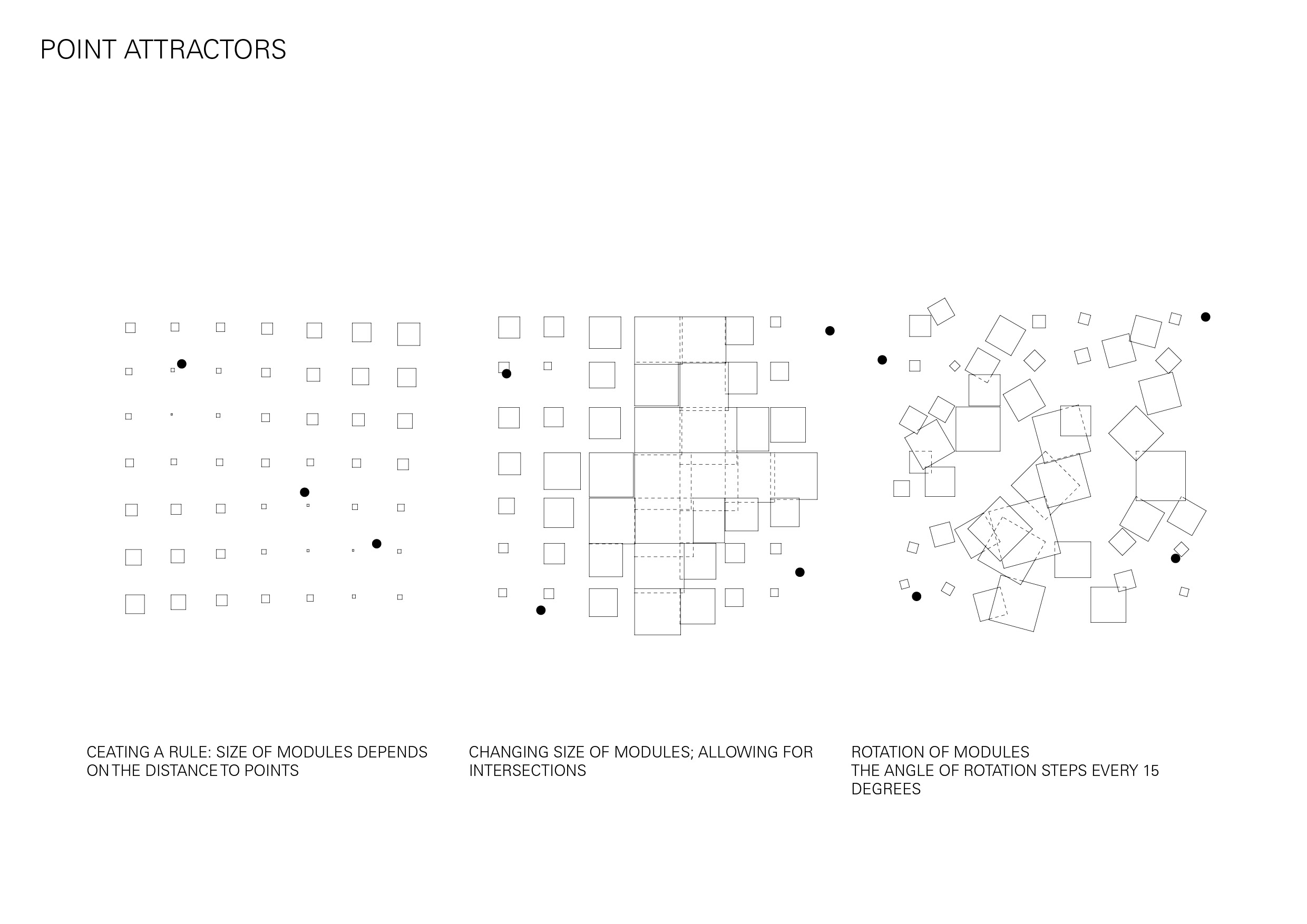
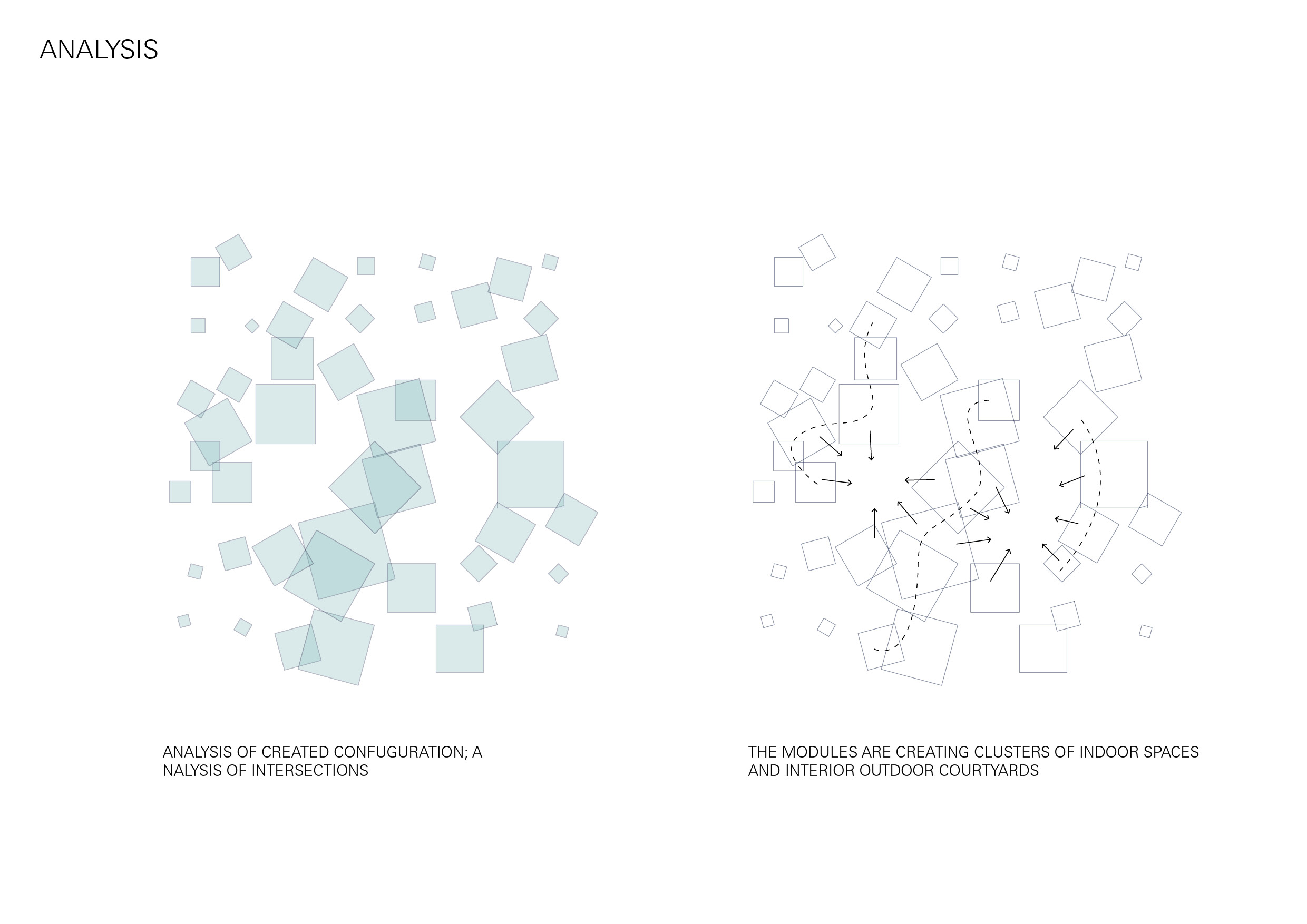
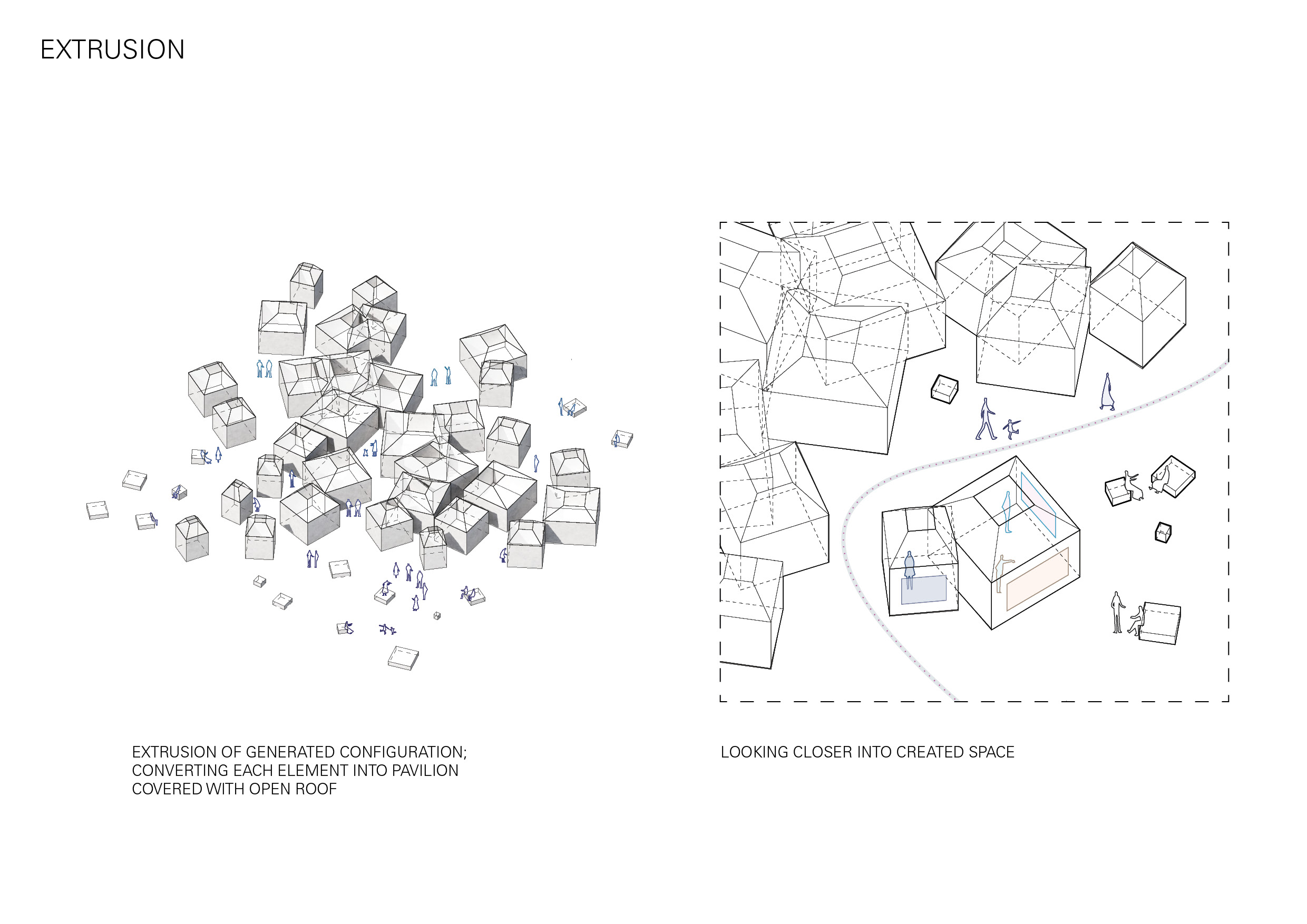

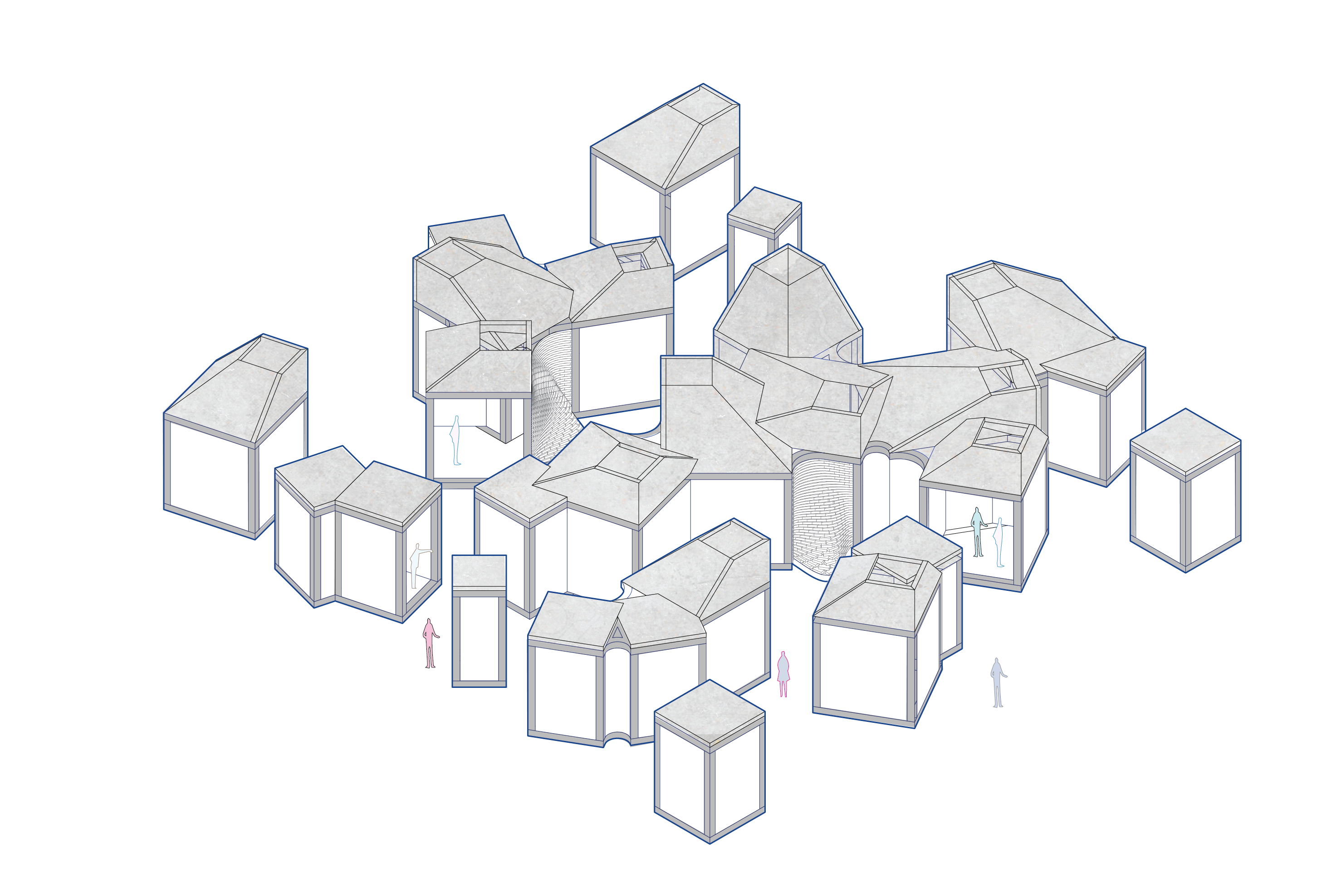


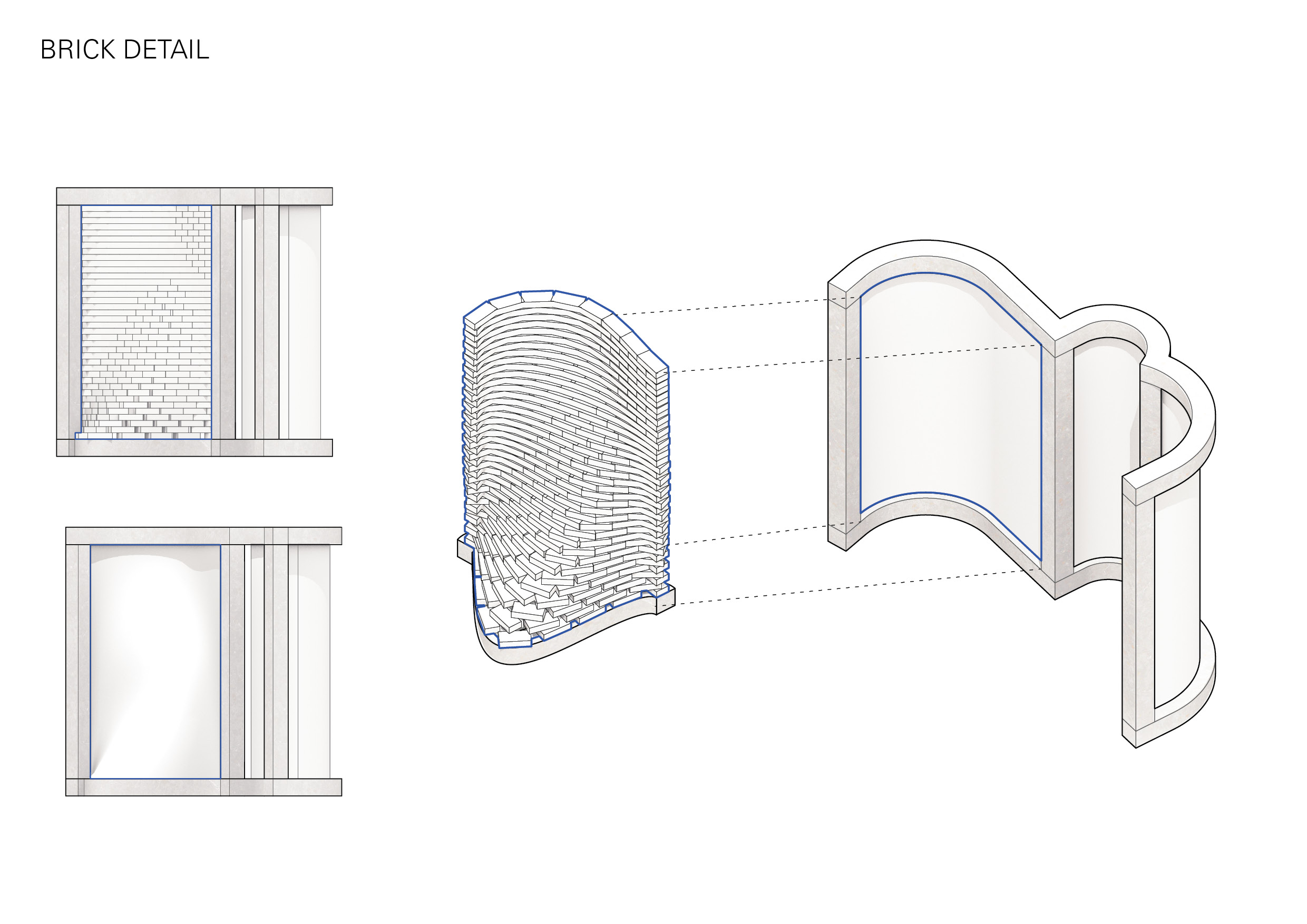
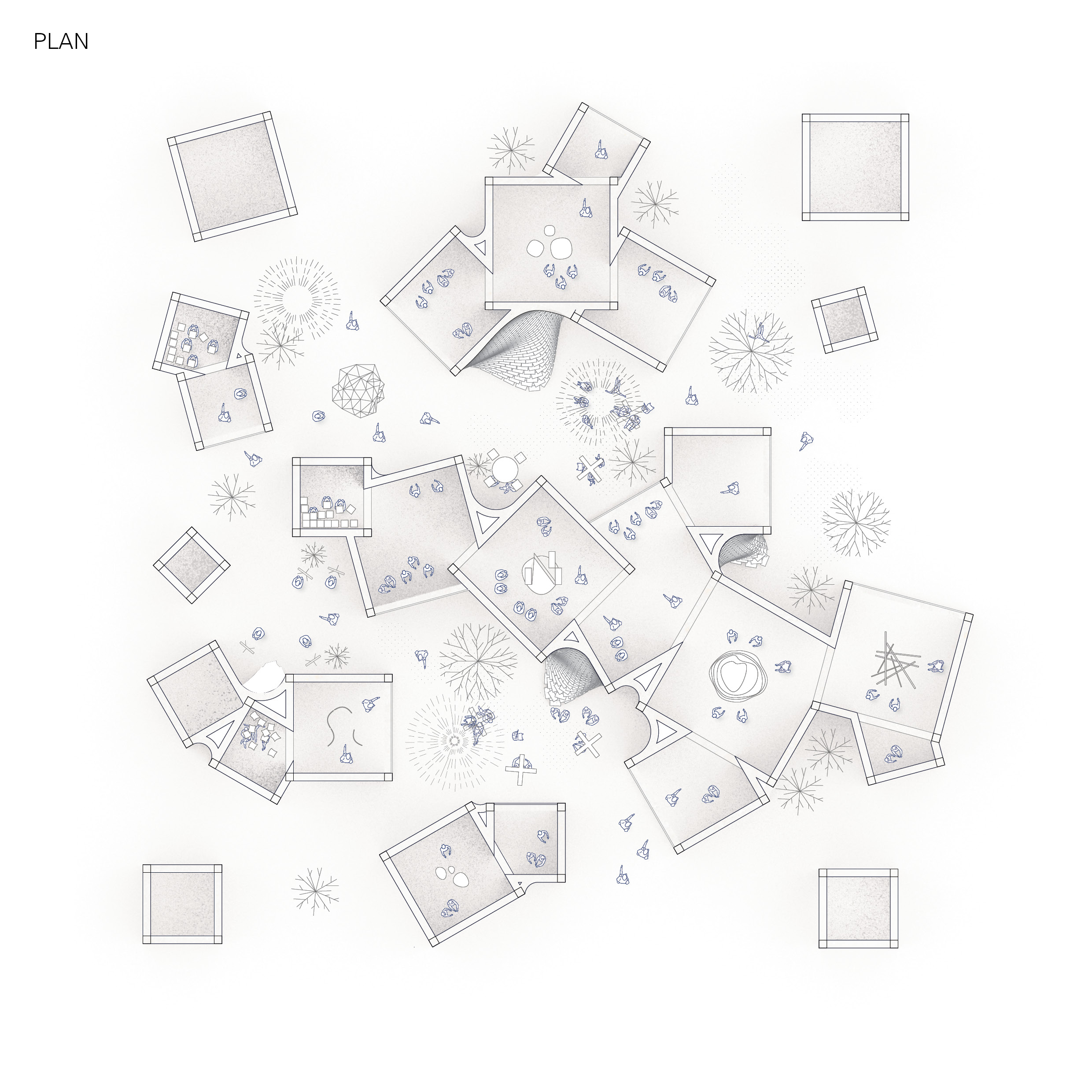
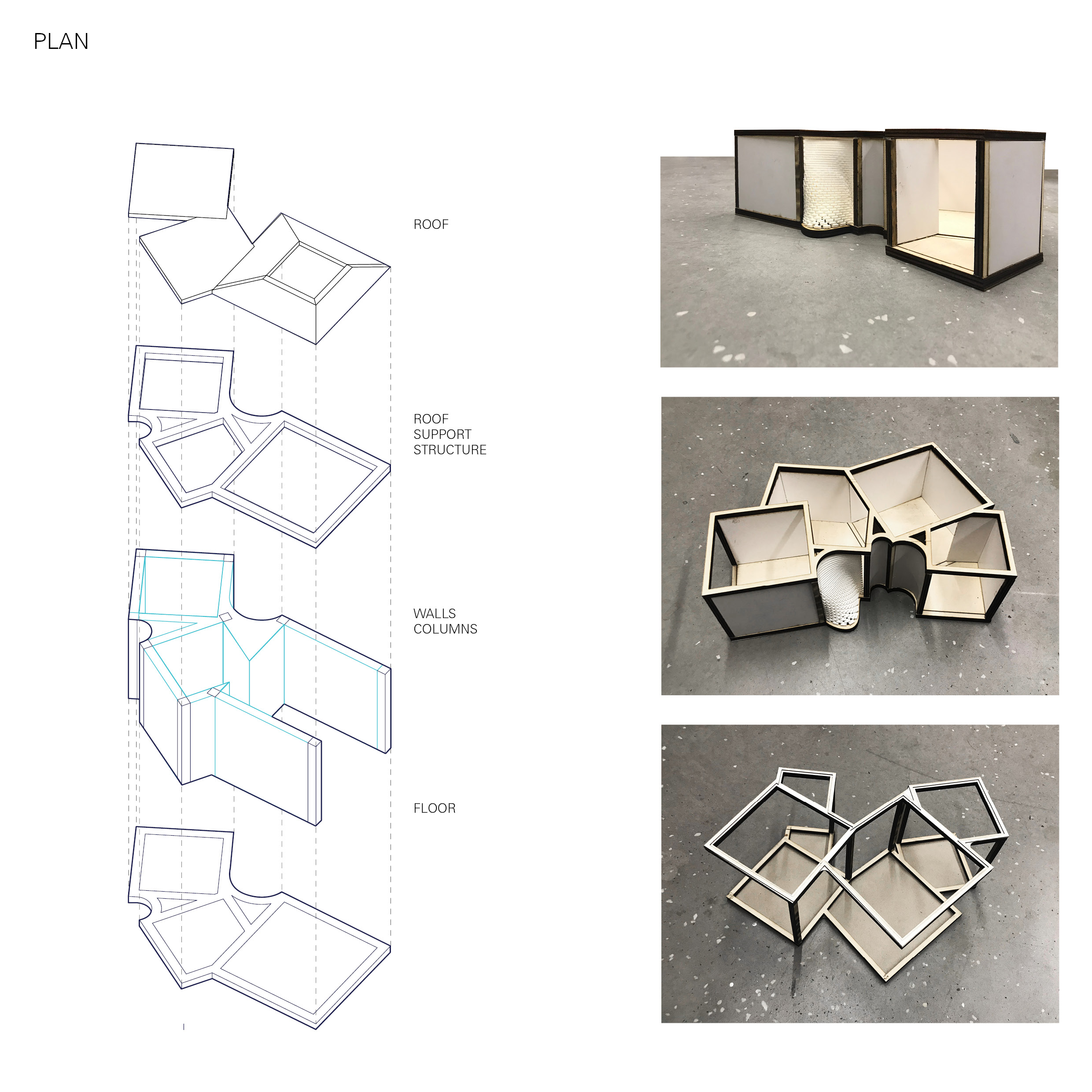

Studio 9: Architectural Notations
KTH Royal Institute of Technology Architecture School











Generating tangents and perpendiculars
Organisation and arrangements

Extrapolating the geometry into structure

Development Axonometric – Three systems meeting – Walls, beams and roof

Python System Breakdown

Development model – reviewing wall to roof connections
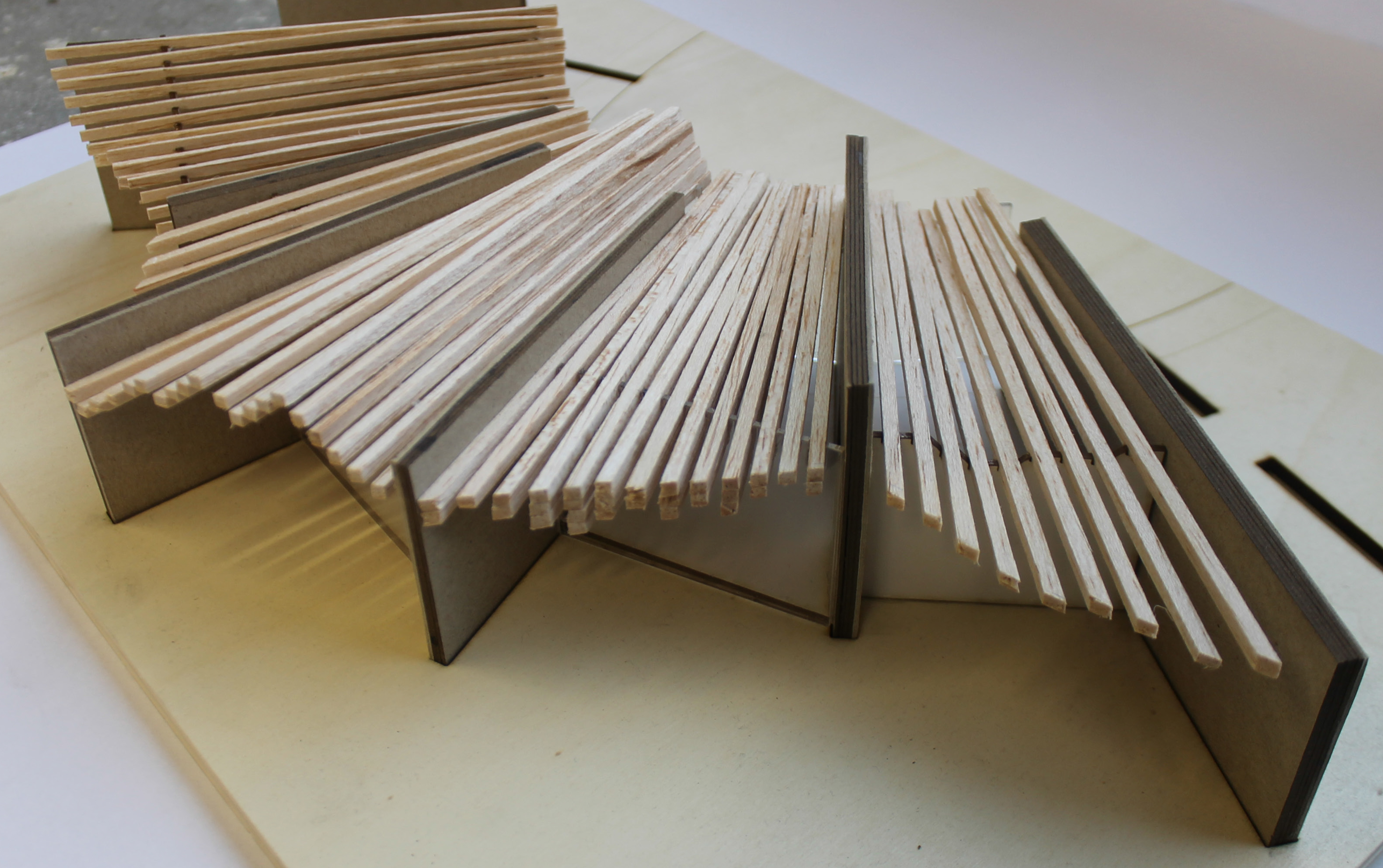
Analysing different input curves and the generations

Classifying the spaces created

Implementing forced perspective into the structure
Development model – Full circle – roof begins to inform the plan

Radial structure – rationalising geometry and simplifying connections

Radial structure – integrating the flexible circulation system

Roof curvature – Two curves vs one – how this affects the section through spaces

Analysing the gradient of the roof – walkable vs non-walkable

Full integrated python and grasshopper system

Drawing from the research and testing throughout project_01 and _02, I began to compile and implement the system I created in order to give architectural form to the space filling curve that is the dragon curve. The path and control points of the test M1 from project one inform the grid along which both the walls and roof structure are set, thereby enforcing a direct correlation between section and plan. Altering parameters such as thickness, scale and spacing of the walls and roof, with respect to desired lighting, movement, material etc. can easily be navigated as the structure and form are resolved thanks to the connection in plan and section
.
To begin the process of thickening the section within the project, I traced the path of the generated curve to identify four instances; 1, 2, 3, 4. Grouping the repetition of these instances, three distinct spatial conditions with aspect to the program were identified: exhibition – a, b, c; structure – column; circulation – corridor/ buffer spaces. Working in parallel with the roof structure, the control points and the path of the curvature is used as the defining grid for the roof. An instance of the curve geometry was used to generate the profile for the roof.
Each of the identified groups hold a combination of spatial characteristics such as flat, concave and convex surfaces. Without giving a set program to these, there is an opportunity to play with volume and the relationship to the ground and roof to provide a series of spaces with unique architectural qualities and views.
Adding thickness to the sections brings about the question of materiality. Keeping the idea of reflectivity and blending in the landscape, a sheet metal finish along the length of the exterior would enforce the sense of continuity. An exposed brick interior could be offset with sheet metal panels to provide different experiences of the space. The sectional model/ drawings, at a scale of 1:50 explore the spatial and tectonic characteristics of the roof and curve such as light, movement, thick and thin.
After producing the axonometric development drawing , I used this as a snapshot to analyse how the code was generating spaces and controlling circulation. But most importantly to reflect on how the walls, beams and roof were working together through manipulation of the code. I started to alter the logic of the code to create a controlled circulation route through the spaces. By randomly deciding whether to shift a wall and creating an opening, or leave the wall untouched.


I then also explored how different input curves could create different spaces and variations by using the same script.
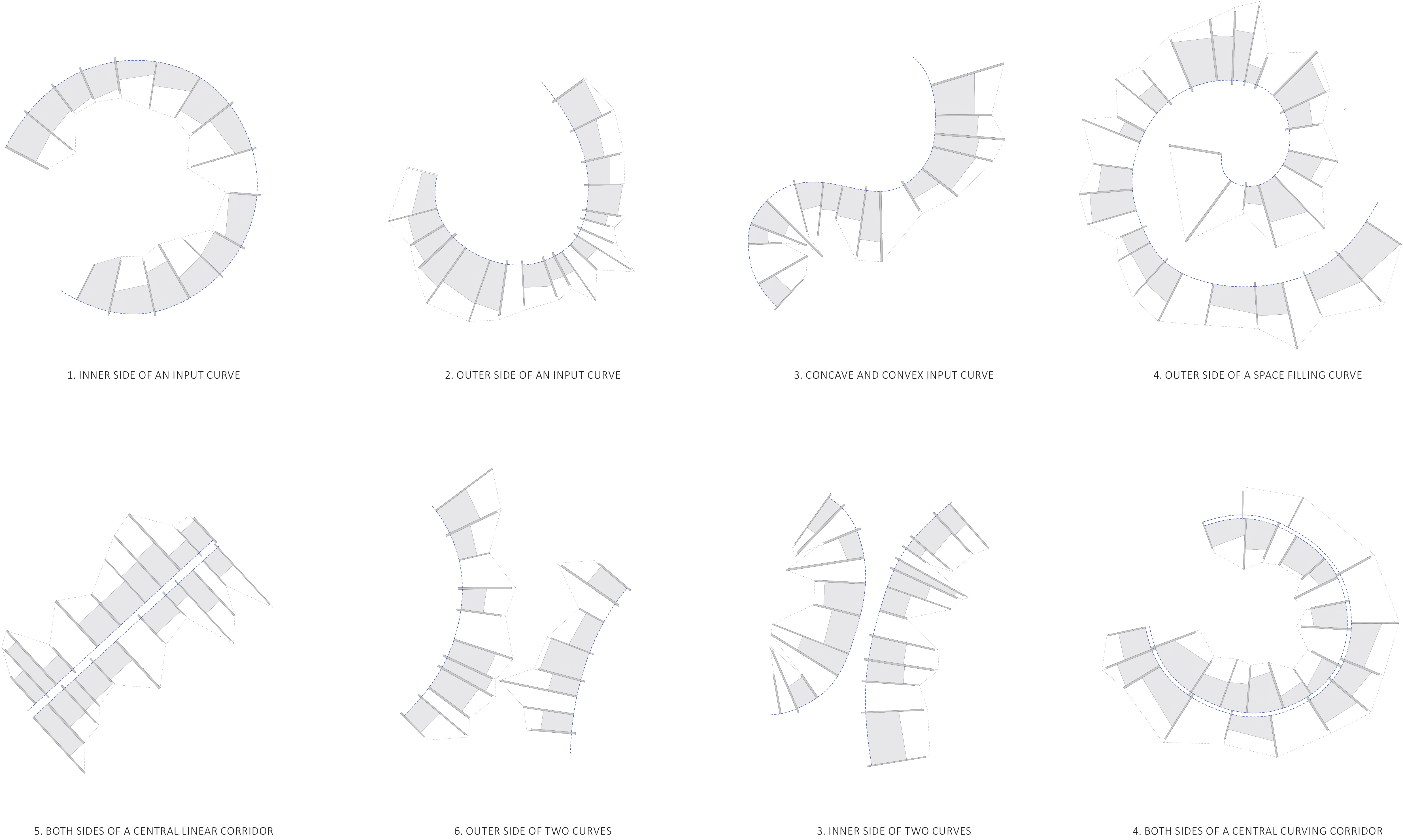
Below is an example of one of the many unique generations that can be produced on the exact same curve. If used on different input curves I could create even more unique variations.
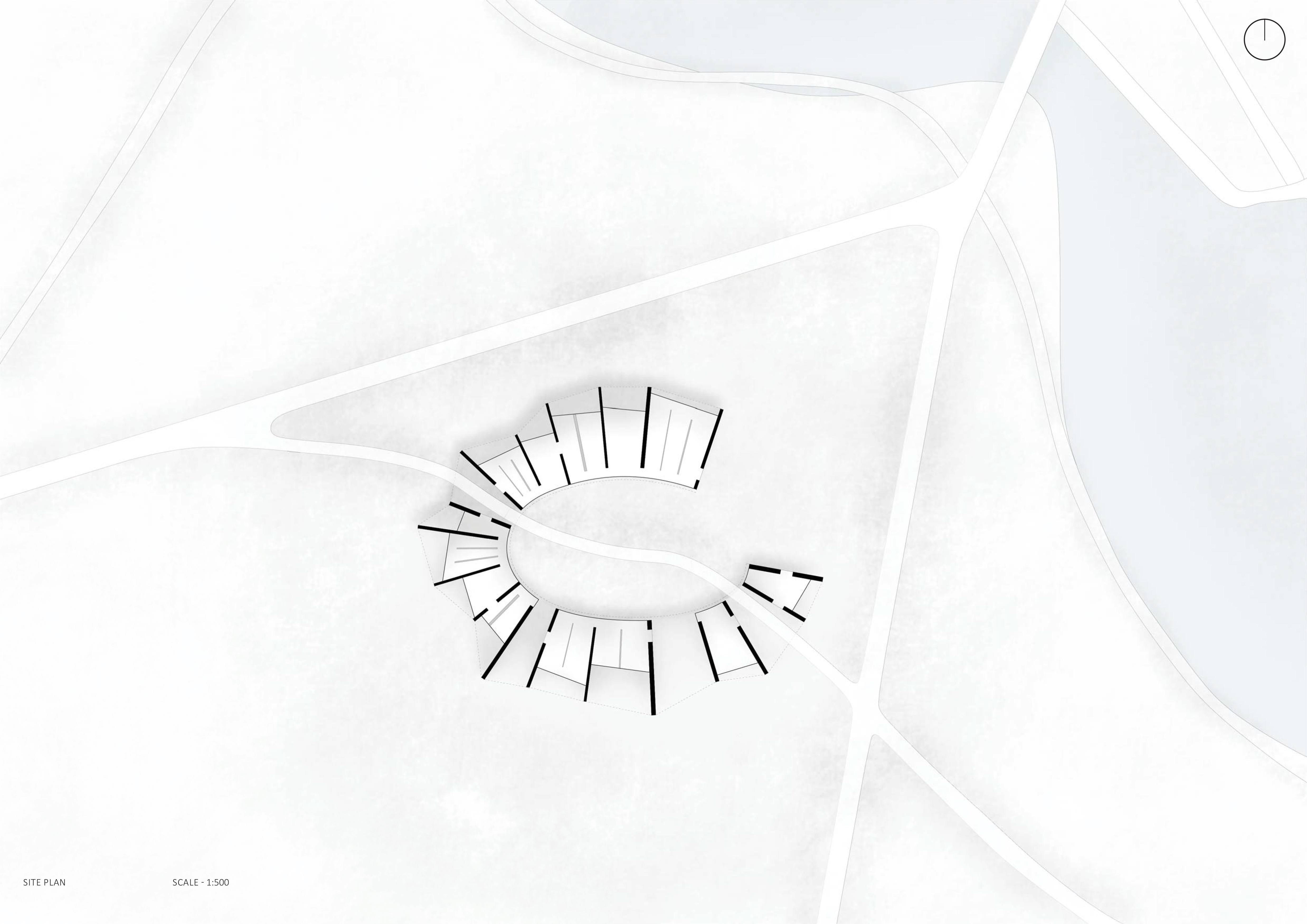
I started to look at the roof form in more detail by considering how it could vary in different ways to affect the environment and experience of the space below. I would then use this to dictate what spaces could be used for. I considered how the spacing and arrangements could be altered to let through different amounts of light, or no light if you want to project video installations. They could even be used as acoustic buffers in tall spaces. Whilst I was exploring the variations of roof form and the transparency of the walls to shut off and expose views, I still wanted the roof form to appear as one cohesive system.
